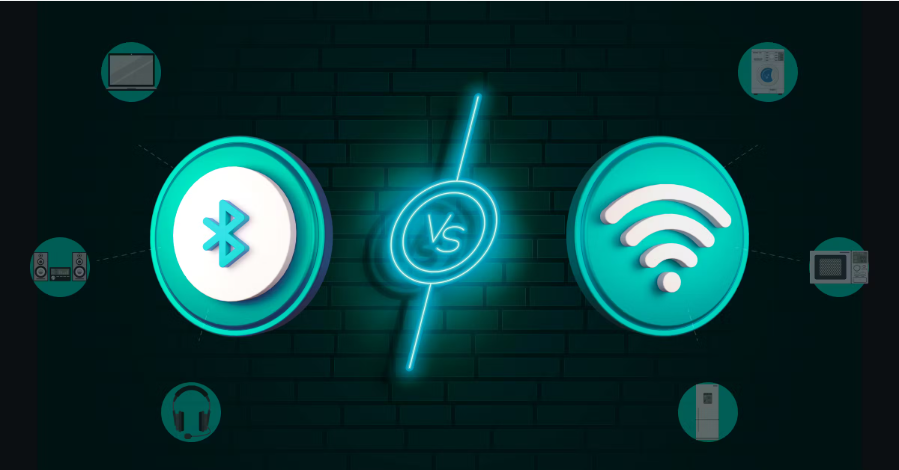
Wireless networking has become a central part of everyday life, connecting us in ways that make communication and data sharing seamless. In this post, we’ll explore the key differences between Wi-Fi, Bluetooth, and cellular networks, as well as their uses, security concerns, and what the future holds for wireless technology.
Wi-Fi: Connecting Us Wirelessly
Wi-Fi, short for Wireless Fidelity, lets devices connect to the internet and each other using radio waves. It operates on several standards, such as 802.11a/b/g/n/ac/ax, with each offering different speeds and ranges. Over the years, Wi-Fi has evolved, improving in speed, capacity, and coverage. Today, the latest Wi-Fi standard, Wi-Fi 6 (802.11ax), provides faster speeds, better efficiency, and stronger performance in busy areas.
Wi-Fi is used in homes, businesses, and public spaces like coffee shops and airports, providing internet access to a wide range of devices, including smartphones, laptops, and smart gadgets. As more Wi-Fi-enabled devices flood the market and demand for faster connections rises, Wi-Fi continues to improve, with Wi-Fi 6 bringing faster internet and more reliable connections, even in crowded environments.
Bluetooth: Local Device Communication
Bluetooth is designed for short-range connections between devices, typically within 100 meters, and operates on the 2.4 GHz frequency band. Unlike Wi-Fi, which offers broader coverage, Bluetooth is meant for close-range data transfer without wires. It’s commonly used to connect devices like keyboards, headphones, and speakers to smartphones or computers.
Bluetooth also enables the creation of small networks, called Personal Area Networks (PANs), for communication between devices in close proximity. The technology has improved over time, with Bluetooth Low Energy (BLE) offering energy efficiency for devices that need long battery life, such as wearables and smart home products.
Cellular Networks: Staying Connected Everywhere
Cellular networks provide mobile connectivity, allowing us to make calls, send messages, and access the internet from almost anywhere. They operate on a network of towers, offering coverage across vast areas. Cellular networks have evolved through generations: 2G, 3G, 4G, and now 5G.
5G brings significant improvements, including ultra-fast speeds, minimal delays, and the ability to connect a massive number of devices. It’s a game-changer, not just for mobile phones but for other technologies like autonomous vehicles, smart cities, and industrial automation, making it easier to access high-speed data while on the move.
Security Concerns in Wireless Networks
While wireless networks are convenient, they come with security risks, such as unauthorized access and data interception. Wi-Fi networks use security protocols like WPA2 and WPA3 to encrypt data and protect against unauthorized access. It’s essential for users to set strong passwords and keep their network devices up to date.
Bluetooth also faces security challenges, such as the risk of unauthorized connections, but uses Secure Simple Pairing (SSP) for safe device pairing. Bluetooth devices should regularly receive firmware updates to address potential security flaws.
Cellular networks incorporate encryption methods to safeguard communications, ensuring privacy and data security. Users are encouraged to follow best practices, like using secure passwords and isolating devices on the network, to enhance security further.
The Future of Wireless Networking
The future of wireless networking is exciting, with advancements that promise even faster speeds, improved efficiency, and new applications. Wi-Fi 6 will make internet access faster and more reliable, especially in crowded spaces. This will open up possibilities for technologies like virtual reality (VR) and augmented reality (AR), which require high-speed connectivity for immersive experiences.
Bluetooth’s evolution with BLE will play a crucial role in the Internet of Things (IoT), enabling smart devices to communicate with each other without draining batteries. This will benefit industries like healthcare, home automation, and asset management.
5G is set to transform the way we connect, with its ability to offer ultra-fast speeds and low latency. This will impact everything from self-driving cars to smart cities, opening up endless possibilities for innovation.
Final Thoughts
Wireless networking has fundamentally changed how we communicate and connect. Each technology—Wi-Fi, Bluetooth, and cellular—has its unique strengths and uses, from providing home internet to enabling mobile connectivity and connecting everyday devices. Understanding the differences and security measures for each is key to using them effectively.
As wireless technologies continue to evolve, we can expect even better speeds, more reliable connections, and the development of new, innovative applications. Staying informed about these advancements will help us fully embrace the future of wireless networking and all the exciting possibilities it brings.













